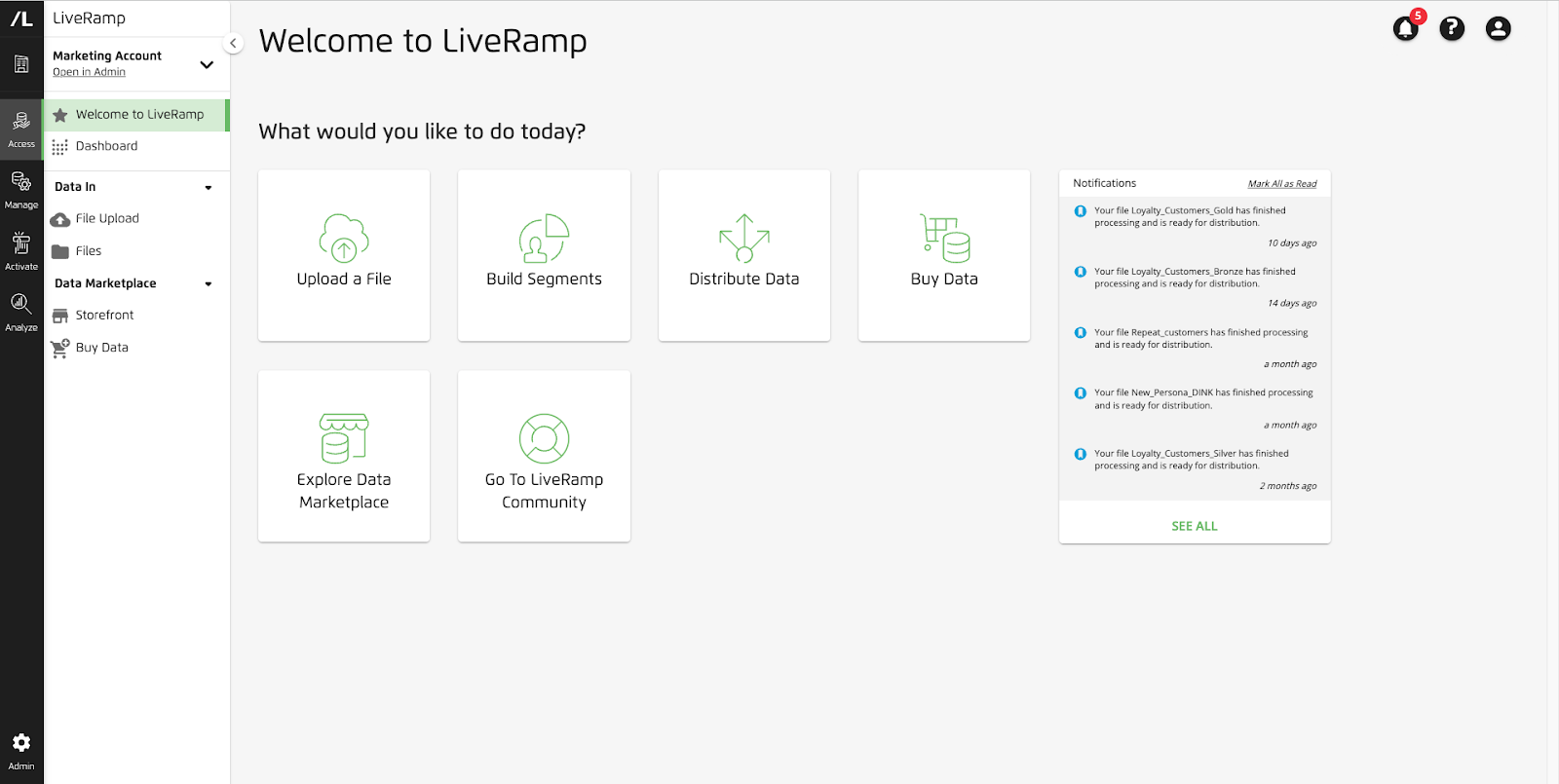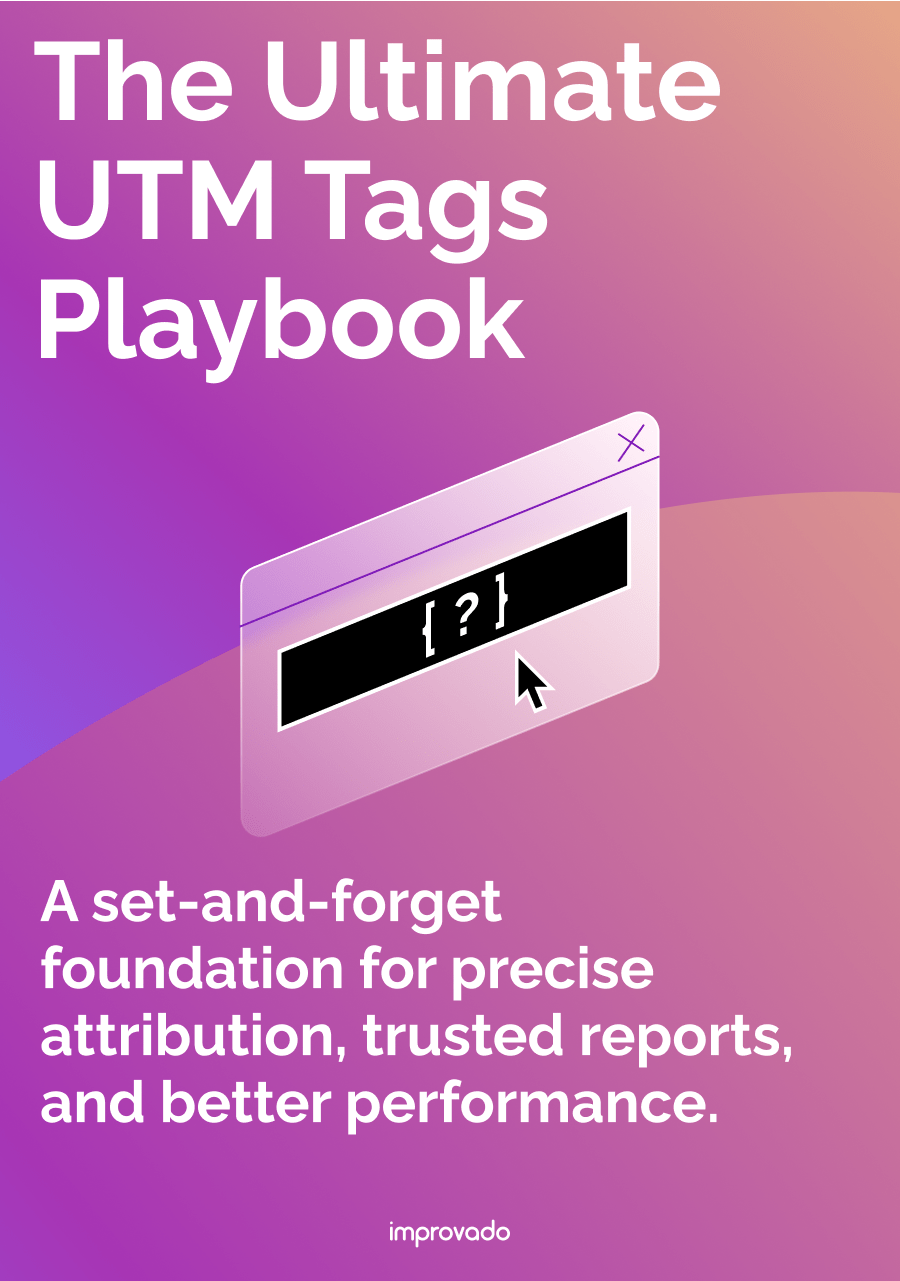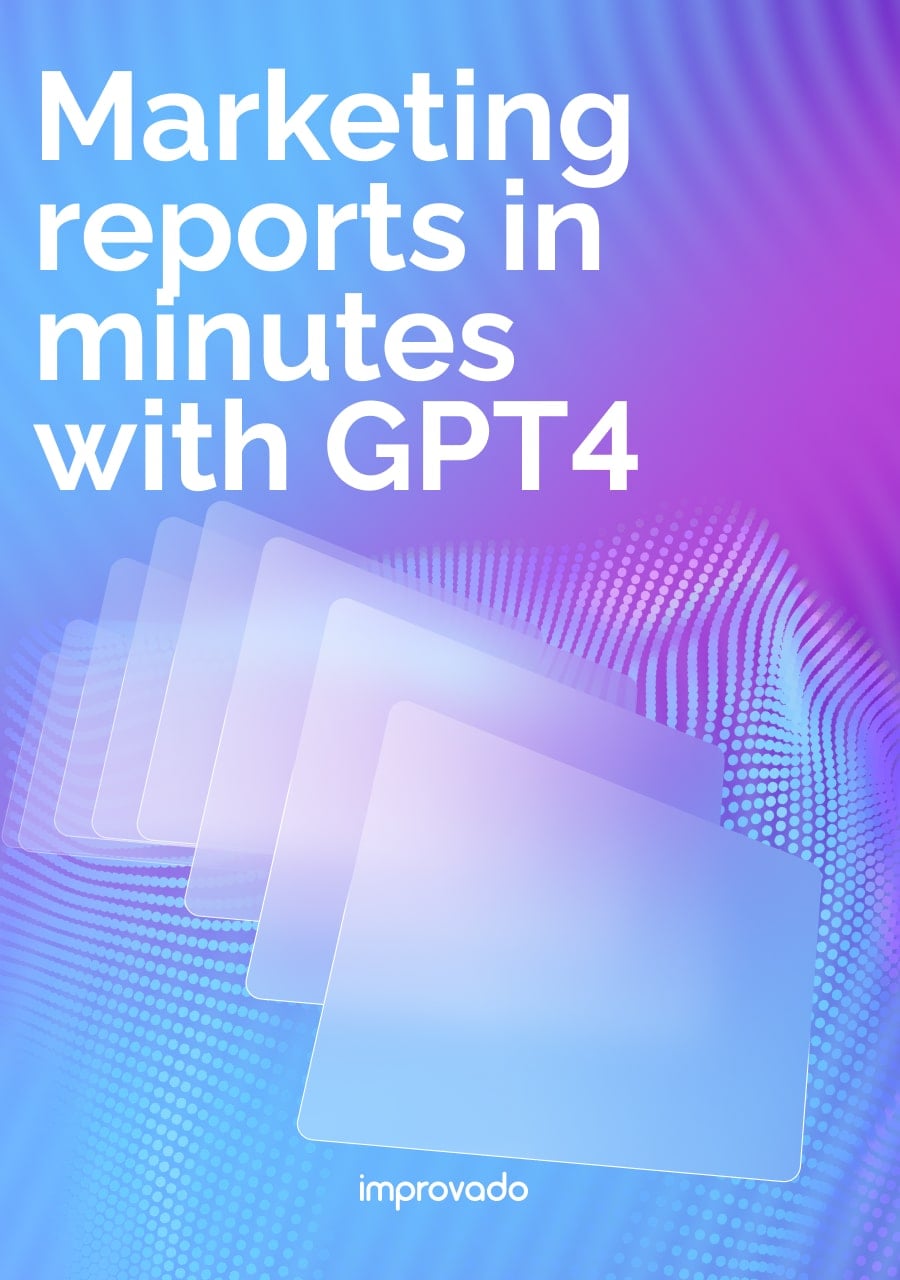Data privacy regulations, signal loss from cookie deprecation, and increasingly fragmented customer touchpoints have made identity resolution and cross-channel activation harder than ever. Even with robust first-party data, many teams face gaps in matching, enriching, and activating audiences at scale without sacrificing compliance or speed.
This guide examines LiveRamp’s role in solving those challenges, covering how it works, its core features, where it excels, its limitations, and how it fits into a modern marketing technology stack.
What Is LiveRamp?

The platform operates as an intermediary layer between a company’s internal data sources and its external marketing and advertising partners.
It ingests offline and online data, anonymizes and matches it to unique identifiers, and then distributes those identifiers to integrated platforms such as demand-side platforms (DSPs), customer data platforms (CDPs), and analytics tools.
How Does LiveRamp Work?
LiveRamp works by creating a secure bridge between your organization’s data and the marketing and advertising platforms you use.
The process typically follows these steps:
- Data ingestion: LiveRamp imports both offline data (such as CRM records, purchase history, and call center logs) and online data (such as website interactions, app usage, and campaign engagement). It supports both structured and semi-structured formats, enabling large-scale ingestion without requiring extensive pre-processing.
- Identity resolution: The platform utilizes both deterministic and probabilistic matching to merge records from various sources into a unified customer profile. This process replaces personal identifiers with privacy-safe IDs, ensuring compliance with regulations like GDPR and CCPA while enabling consistent recognition across channels.
- Data anonymization and hashing: Sensitive fields are hashed or encrypted to prevent exposure of personally identifiable information (PII). This step is critical for safely sharing audience data with partners without compromising security.
- Activation across channels: Once identities are resolved, LiveRamp distributes audience segments to integrated platforms, including DSPs, SSPs, CDPs, analytics tools, and walled gardens. This ensures that targeting and personalization strategies can be applied consistently across paid, owned, and earned channels.
- Measurement and attribution: LiveRamp enables closed-loop measurement by matching exposure data back to customer profiles. This allows marketing and operations teams to attribute conversions, track cross-channel performance, and optimize campaigns with a high degree of precision.
- Ongoing data governance: All data flows are monitored with built-in governance tools, ensuring partner access remains compliant, data usage is auditable, and integration logic remains aligned with business rules.
What is LiveRamp’s Data Onboarding?
LiveRamp’s data onboarding is the process of securely connecting your organization’s offline customer data to the online ecosystem without exposing sensitive information.
In practice, this means taking first-party datasets, such as CRM records, in-store transactions, or call center logs, and matching them to digital identifiers like cookies, device IDs, or platform-specific user IDs. The result is data that can be used for targeting, personalization, and measurement across multiple channels and partners.
Who can benefit from LiveRamp data onboarding?
LiveRamp data onboarding can benefit a wide range of industries, especially those that rely on integrating offline and online customer data to enhance marketing effectiveness and audience targeting:
- Retailers and ecommerce: To onboard offline purchase data (like CRM records) and connect that data to online identities for targeting personalized ads across multiple channels.
- Financial Services and Banks: Activate first-party customer data while maintaining compliance with privacy regulations like GDPR.
- Healthcare and Pharmaceutical Companies: Use anonymized patient and healthcare data for targeted outreach, ensuring HIPAA compliance.
- Advertising and Media: For activating segmented audience data across hundreds of advertising and marketing platforms, including demand side platforms, social media, publishers, and search engines.
- Telecommunication Providers: Integrate CRM and subscription data into programmatic campaigns to reduce churn and upsell services.
- CPG and Consumer Goods Companies: To translate offline purchase data attached to personal identifiers like emails into persistent IDs, enabling activation of audiences across digital advertising platforms.
What Are the LiveRamp Limitations
While LiveRamp offers robust identity resolution and data onboarding capabilities, there are important limitations and operational constraints that can impact effectiveness, scalability, and cost-efficiency.
- Data quality dependency: The accuracy of LiveRamp's match rates is directly tied to the quality of the input data. Incomplete records, stale identifiers, or inconsistent formats reduce match precision and campaign reach. For large-scale onboarding, even minor quality issues can compound into significant performance drops.
- Black-box identity resolution: LiveRamp's process for creating unified profiles (RampIDs) is not transparent. Users have no visibility into the specific algorithms, rules, or probabilistic logic used to merge records, making it difficult to audit or refine the process to match unique business rules.
- Data storage and privacy risks: All customer data is transmitted through and stored on LiveRamp's infrastructure. This creates potential compliance and security considerations under regulations such as GDPR and CCPA. Sensitive or regulated data requires additional safeguards, contractual controls, and monitoring.
- Manual touchpoints despite automation: While many onboarding tasks are automated, workflows often require manual CSV uploads, SFTP transfers, or custom integration builds. For complex, high-frequency data flows, these steps can add operational overhead and delays.
- Cost considerations: LiveRamp can be expensive, with pricing influenced by data volume, processing, and storage requirements. Without careful measurement of ROI, onboarding costs may outweigh the incremental lift in targeting precision and reach.
- Audience minimum size: Audiences with fewer than 25 unique members will fail to sync, limiting activation for highly niche or hyper-targeted campaigns.
- Sync frequency and latency: Audience sync generally occurs once per day and can take up to 30 hours to complete. Initial syncs may take up to three days, which is too slow for time-sensitive, real-time, or rapidly changing campaigns.
- Regional feature gaps: Some capabilities, such as SFTP-based transfers, are available only in specific regions (for example, the US) and not in others like EMEA, which can complicate global deployment.
- Mapping and ingestion sensitivity: Minor changes in field mappings or ingestion setups can cause processing to halt until the issue is corrected. This fragility can disrupt campaigns if not closely monitored.
Unified Marketing Analytics with Improvado
LiveRamp is effective for resolving identities and enabling audience activation, but on its own, it doesn’t give teams the full operational picture they need to manage marketing performance end-to-end.
Improvado builds on the value of LiveRamp by integrating its outputs directly into a broader marketing analytics ecosystem, combining identity data with spend, engagement, conversion, and revenue metrics from hundreds of other sources in one centralized environment.
This unified approach eliminates the data silos and latency that can slow decision-making. Instead of waiting on batch sync cycles or working across disconnected platforms, teams can access enriched, cross-channel data in near real time.
By placing identity resolution inside a transparent, customizable, and always-on data layer, Improvado transforms it from a back-end process into a strategic growth driver. Marketers can move beyond match rates to understand which audiences are converting, how campaigns are influencing revenue, and where to optimize budgets.
To see how Improvado can streamline your identity data and unlock deeper marketing insights, book a demo today.
.png)



.png)
